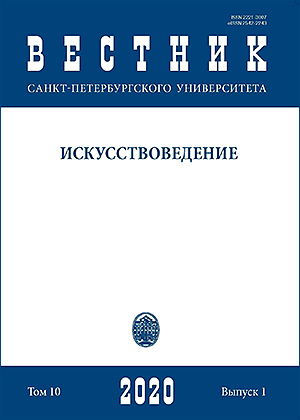Интерпретация эмблемы «Concordia» Андреа Альчато у Питера Пауля Рубенса и Диего Веласкеса
DOI:
https://doi.org/10.21638/spbu15.2020.108Аннотация
Предложена гипотеза о том, что на замысел двух знаменитых картин XVII в. — «Сдача Бреды» Диего Веласкеса и «Встреча двух Фердинандов» Питера Пауля Рубенса — оказала влияние эмблема «Concordia» из сборника Андреа Альчато. Если в отношении картины Веласкеса эта точка зрения не раз уже высказывалась, то в отношении полотна Рубенса она звучит впервые. Гипотеза обосновывается через анализ историко-культурной ситуации, в частности материалов, связанных с Торжественным въездом кардинала-инфанта Фердинанда в Антверпен в апреле 1635 г. Картина «Встреча двух Фердинандов» рассматривается также в контексте произведений, созданных по типу «solemn encounter», в ряду которых она занимает особое положение благодаря акцентированию символического, пришедшего из римской античности мотива рукопожатия. Предложенная в статье трактовка превращает эмблему «Concordia» в связующее звено между двумя названными произведениями Рубенса и Веласкеса. Это, в свою очередь, создает дополнительное обоснование точки зрения тех ученых, которые писали о формальной близости двух картин. Оба произведения были созданы в одни и те же годы (1634–1635), и указанная взаимосвязь представляется неслучайной, хотя остается неизвестным, каким именно образом художники могли знать о замысле друг друга. Предложен ответ на давно поставленный вопрос, почему в картине Веласкеса отсутствует столь важный для эмблемы «Concordia» мотив рукопожатия. Анализ произведения испанского живописца позволяет понять сложное аллегорическое построение, спрятанное за реалистическим решением этого исторического полотна. Выявленное различие по отношению к названной эмблеме указывает на скрытую полемическую позицию младшего из художников, который, как будто нарочито берясь за аналогичную тему, что и его старший собрат, предлагает совершенно иную ее трактовку.
Ключевые слова:
Андреа Альчато, Диего Веласкес, Питер Пауль Рубенс, Тридцатилетняя война, эмблема, античная традиция, историческая картина, Бреда, Нёрдлинген
Скачивания
Библиографические ссылки
References
Загрузки
Опубликован
Как цитировать
Выпуск
Раздел
Лицензия
Статьи журнала «Вестник Санкт-Петербургского университета. Искусствоведение» находятся в открытом доступе и распространяются в соответствии с условиями Лицензионного Договора с Санкт-Петербургским государственным университетом, который бесплатно предоставляет авторам неограниченное распространение и самостоятельное архивирование.






